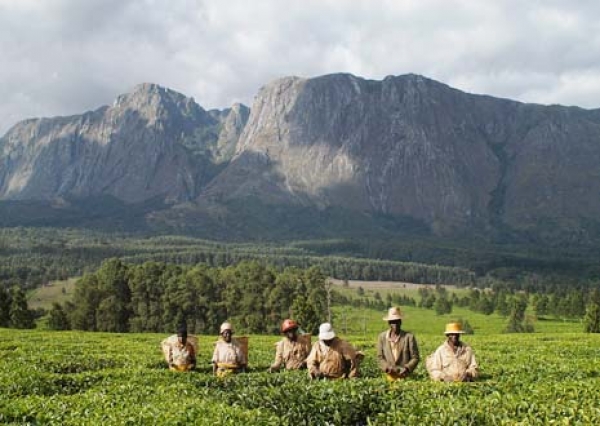IMPLEMENTING A CEDAR MANAGEMENT PLAN ON MOUNT MULANJE, MALAWI

In reflecting on project activities, challenges and successes to date, David Nangoma, Mulanje Mountain Conservation Trust in Malawi explains the importance of the development and implementation of the Cedar Management Plan to the achievement of his project’s objectives.
“The plan is a key output of the Mulanje Cedar Ecological Restoration project”, he explains, referring to the country’s National Tree designate – a Critically Endangered arboreal wonder endemic to a tiny patch of cloud forest on Mulanje Mountain in Northern Malawi.
The management plan is a product of a robust and wide stakeholder consultation that included the local traditional leaders in Mulanje and Phalombe Districts which Mulanje Mountain spans, technical experts in the department of Forestry and other line ministries, the NGO sector and local members of the communities around the mountain, including cedar sawyers, traders and artisans.
The plan has been structured to cover three key areas including:
1. Planting: covering seed, seedling management and tree planting; identification and prioritization of planting sites and site preparations; avenues for stakeholders participation in cedar planting and management.
2. Protection: covering fire management; law enforcement and disease control.
3. A research component covering cedar silviculture, climate change effects, genetic viability studies, nutrient stresses and hydrology; as well as financing mechanisms for developing sustainable business marketing cedar products.
It has not included a harvesting and marketing plan simply because the resource needs a good recovery period to sustain a reasonable harvesting regime in future, beyond the 2014 – 2019 period, David adds.
Despite its fame, the tree faces serious conservation issues due to corruption-linked illegal harvesting and harsh human-induced fires, climate change impacts and many other human-induced pressures. Agreeing and implementing this plan is a milestone in its own right.
Additionally, some key actiivities have been achieved on time: all firebreak networks clearing was completed by June 30th 2015 for example. Further controlled burning was performed following Fire Training of Forestry Staff and community members.
Meanwhile, restoration through seed collection, management and tree planting has not come without its challenges. The general belief amongst local people surrounding the Mulanje Mountain Forest Reserve is that Mulanje Cedar is a “God-given Wonder” and no human intervention can reverse slide toward extinction, explains David. So a prerequisite for success has been demystifying this perception through outreach work but also by demonstrating the efficacy of the nurseries to supply young trees for planting out on the mountain.
The restoration target is ambitious - aiming to plant 1.2 million cedar seedlings as part of the management plan. These would be supplied by a total of 13 nurseries, with concentration of planting efforts on bolstering three key cedar clusters on the mountain in particular: Chambe, Thuchila and Chisepo areas. Technically, it can be done affirms David.
Yet the collection of viable seed to supply those nurseries is technical. Only mature cones (more than two years old) produce seed; some trees and clusters are more prolific than others and annual production rates fluctuate.
So far, a total of 9.1 kgs of winnowed cedar seeds has been collected out of which 6 kgs were sown. “We need to ensure enough viable seed is available for planting within the project’s life-span but also for the purposes of seed-banking for future use. So the task is doubly challenging”. In addition we have encountered resistance from some community members who do not believe in the project.
That said, David remains quietly confident that the plan and its hard-won support will help save the Mulanje Cedar. By December 2015, most tree nurseries have been filled to capacity with almost 100,000 seedlings expected to be ready for field planting. This represents almost a 200% increase on target achievements compared to the previous reporting period.
That a tree could go extinct is probably not as headline grabbing when compared to the slide toward extinction of other charismatic species of wildlife such as tigers or elephants. The Mount Mulanje Cedar is not only a national symbol however, but a valuable source of raw materials for a number of livelihood practices including construction, furniture and artisanal uses.
Saving the tree through an integrated participatory management plan helps communities and wildlife in a win-win basis and represents an excellent example of how a species conservation project can promote a transition from conflict to coexistence.

Facebook comments